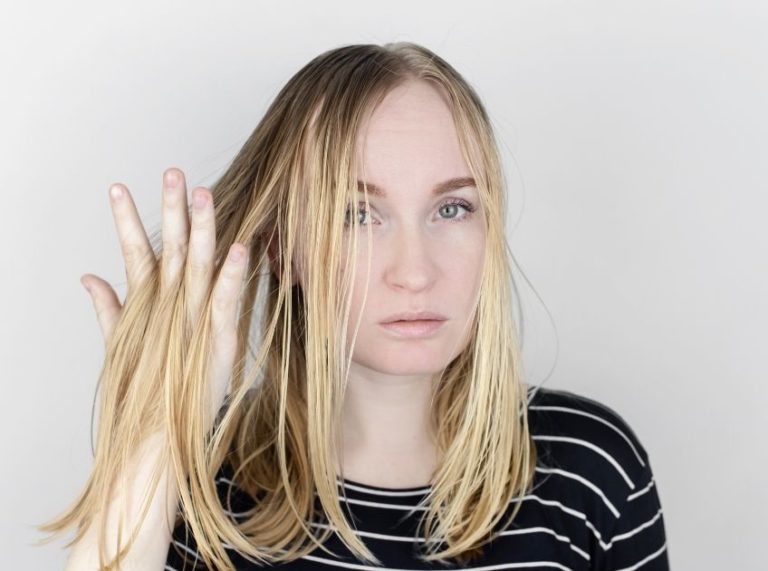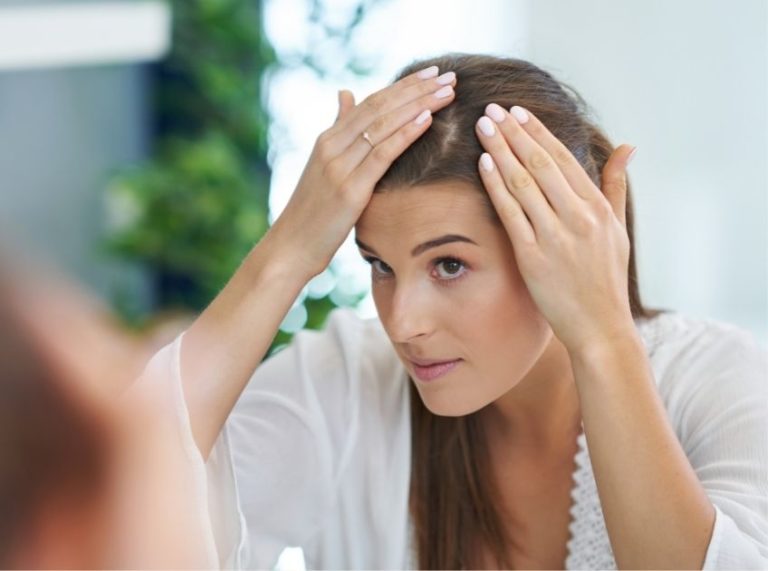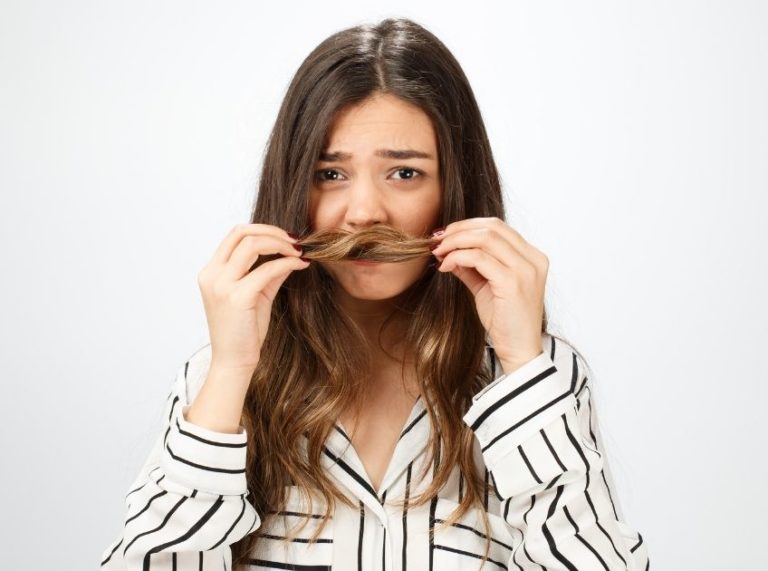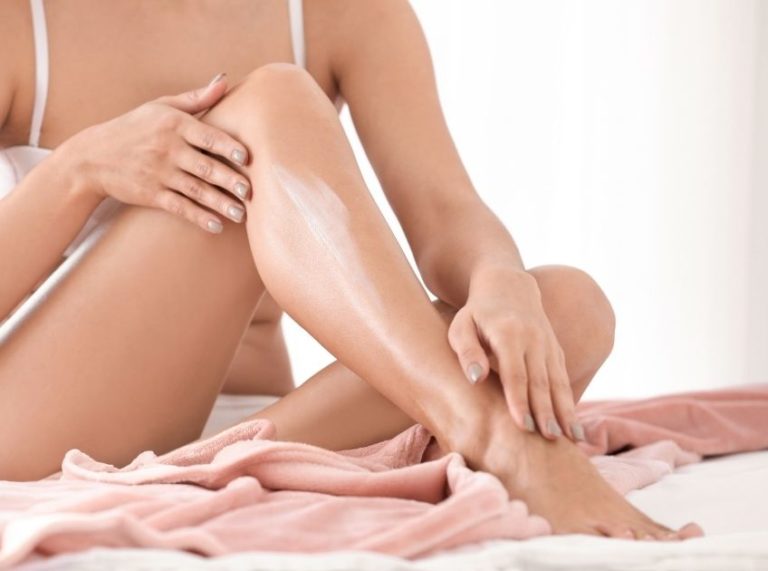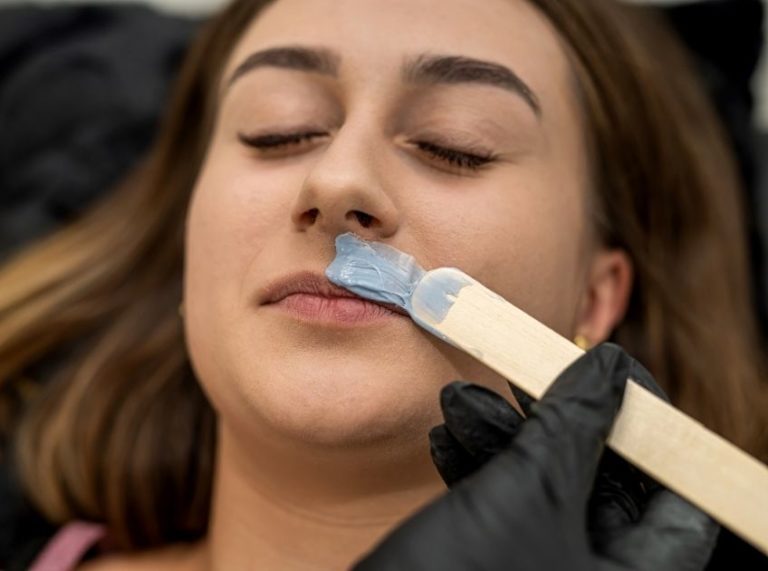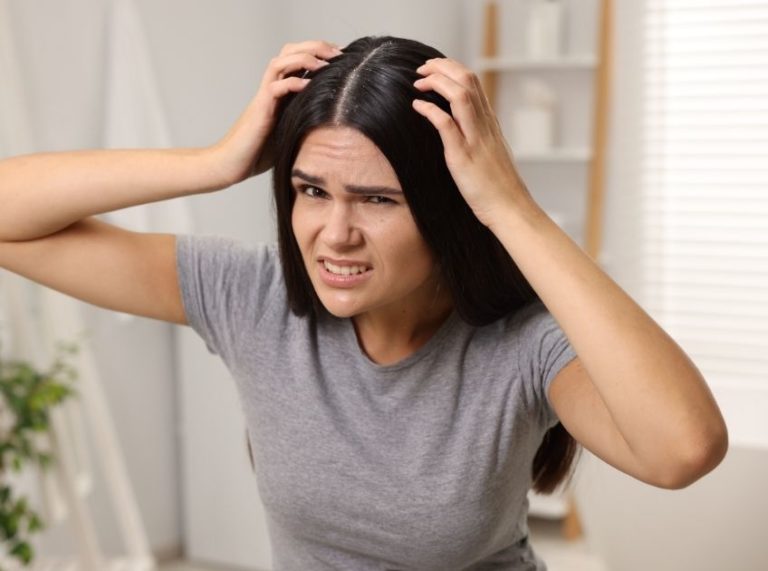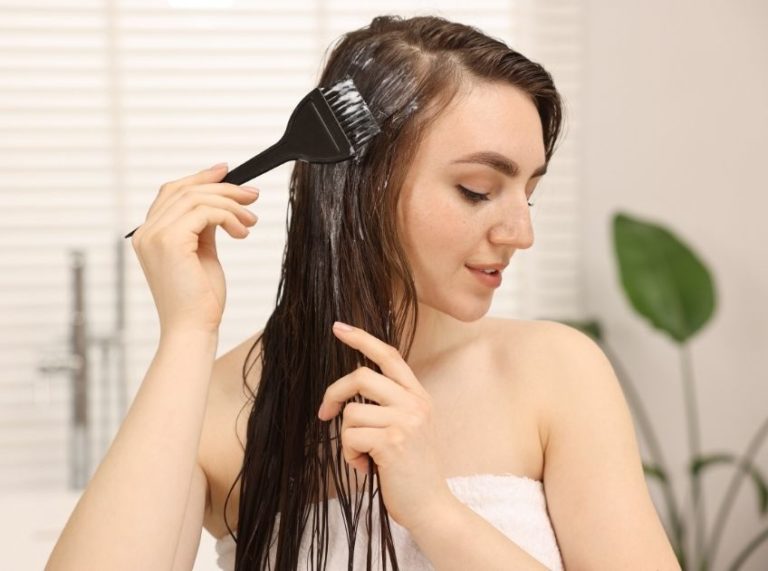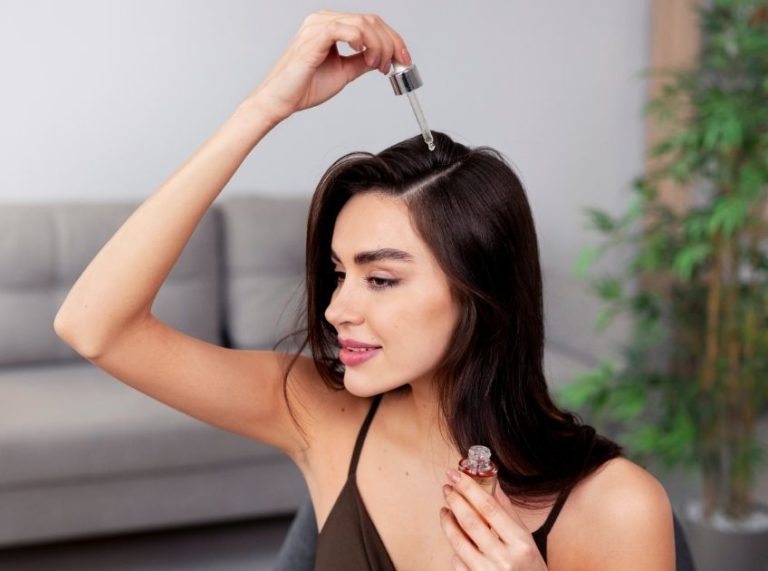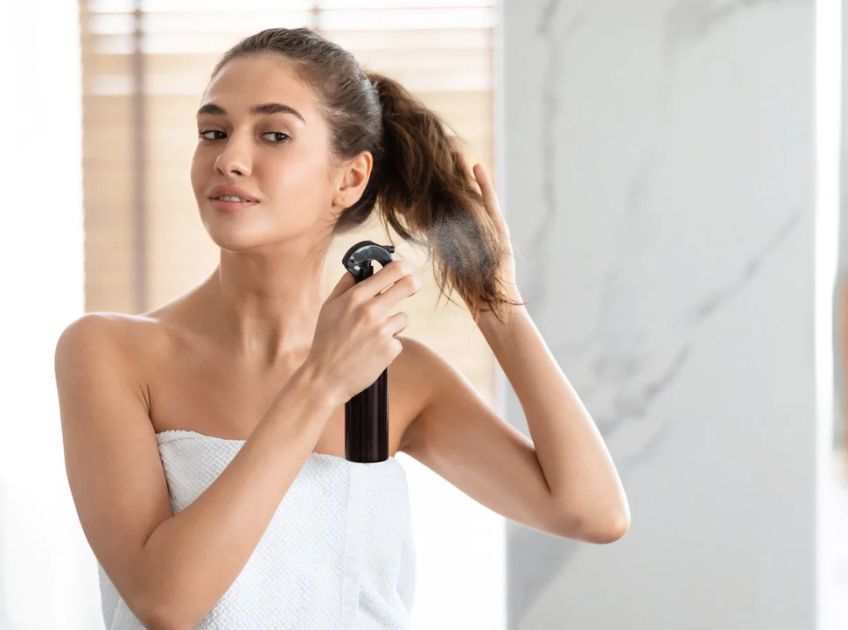
Important: This article is for informational purposes only. Please read our full disclaimer for more details.
Hairspray may give you perfect hold, but it can also leave behind a stubborn, sticky residue. Over time, this buildup weighs down hair, dulls shine, and clogs the scalp. If your strands feel stiff or your scalp feels grimy, it’s time to detox your hair naturally, without harsh chemicals.
6 Natural Ways to Remove Hairspray Buildup Effectively
Product buildup from hairspray can make hair dull, greasy, and hard to manage. These six gentle yet effective natural remedies help break down the sticky residue while maintaining your hair’s health—no harsh chemicals needed.
1. Apple Cider Vinegar (ACV) Rinse
Apple cider vinegar is a natural clarifier that balances your scalp’s pH and dissolves buildup without stripping natural oils.
Ingredients
- 2 tablespoons raw apple cider vinegar
- 1 cup warm water
- Optional: 2–3 drops of tea tree or peppermint essential oil (for scalp refresh)
Directions
- Mix ACV with water in a squeeze bottle or bowl.
- After shampooing, pour the mixture over your scalp and hair.
- Massage gently for 1–2 minutes.
- Let it sit for 3–5 minutes, then rinse with cool water.
How It Works
ACV contains acetic acid, which helps dissolve product film and excess sebum.
Study: ACV has antibacterial and pH-balancing effects, supporting scalp health (1).
Use: Once a week
Safety Note: Avoid contact with eyes; dilute well to prevent scalp irritation.
2. Baking Soda Paste
Baking soda acts as a mild exfoliant that lifts off product buildup and unclogs scalp pores.
Ingredients
- 1 tablespoon baking soda
- 1–2 tablespoons water (adjust for texture)
- Optional: Add a few drops of coconut oil for added moisture
Directions
- Mix baking soda and water to form a paste.
- Apply to damp scalp and roots, massaging in circular motions.
- Leave on for 2–3 minutes only.
- Rinse thoroughly and follow with conditioner.
How It Works
Baking soda’s alkaline pH helps break down chemical residue and grease.
Study: Sodium bicarbonate is shown to be an effective, gentle cleanser, but should be used sparingly to avoid pH imbalance (2).
Use: No more than once every two weeks
Safety Note: Avoid on color-treated or very dry hair, as it may be drying.
3. Aloe Vera & Lemon Juice Cleanser
This soothing and cleansing duo removes buildup while calming irritated scalps.
Ingredients
- 2 tablespoons fresh aloe vera gel
- 1 tablespoon fresh lemon juice
- 1 tablespoon water
Directions
- Blend aloe vera gel and lemon juice until smooth.
- Apply to the scalp and massage for a minute.
- Let it sit for 10 minutes.
- Rinse with lukewarm water and lightly shampoo if needed.
How It Works
Lemon’s citric acid breaks down residues, while aloe hydrates and calms.
Study: Aloe contains antioxidants, enzymes, and anti-inflammatory compounds that promote scalp healing (3).
Use: Once a week
Safety Note: Always patch-test lemon; avoid sun exposure afterward to prevent photosensitivity.
4. Chamomile or Green Tea Rinse
Herbal teas like chamomile and green tea have clarifying and antioxidant benefits that rejuvenate the scalp.
Ingredients
- 2 chamomile or green tea bags
- 2 cups boiling water
Directions
- Steep the tea bags in hot water for 10 minutes.
- Let the tea cool to room temperature.
- After shampooing, pour the tea over your scalp and hair.
- Let it sit for 5 minutes, then rinse with cold water.
How It Works
Green tea contains EGCG and polyphenols that reduce inflammation and support hair health. Chamomile soothes the scalp and softens hair.
Study: EGCG improves hair follicle health and reduces oxidative stress (4).
Use: 1–2 times a week.
Safety Note: Always cool tea completely before use to avoid burns.
5. Fuller’s Earth (Multani Mitti) Scalp Mask
This mineral-rich clay acts as a natural detoxifier, absorbing oil, dirt, and product buildup.
Ingredients
- 2 tablespoons Fuller’s Earth
- 1 tablespoon rosewater or plain water
- Optional: 1 teaspoon aloe vera gel (for extra hydration)
Directions
- Mix ingredients to form a smooth, thick paste.
- Apply to scalp and roots only (avoid full hair length).
- Let it dry for 10–15 minutes.
- Rinse thoroughly with lukewarm water and follow with conditioner.
How It Works
Fuller’s Earth has excellent absorbent and clarifying properties. It lifts impurities from the scalp and balances oil production.
Study: Natural clay masks have been shown to reduce oiliness and clarify pores in dermatological uses (5).
Use: Once every 2 weeks.
Safety Note: May be drying for very dry or curly hair types—apply oil to strands before use.
6. DIY Oatmeal Hair Cleanser
Oats gently cleanse and condition the scalp while calming inflammation.
Ingredients
- 2 tablespoons colloidal oatmeal or finely ground oats
- 3–4 tablespoons warm water
- Optional: 1 teaspoon coconut milk for added nourishment
Directions
- Mix oats with warm water until creamy.
- Apply to a damp scalp and massage in with fingers.
- Leave on for 5–7 minutes.
- Rinse thoroughly with lukewarm water and follow with a mild shampoo if needed.
How It Works
Oats contain saponins, natural cleansing agents that remove dirt and residue.
Study: Colloidal oatmeal soothes irritated skin and supports barrier function (6).
Use: Once a week
Safety Note: Use a fine mesh strainer if pouring the mixture down the drain to avoid clogging.
What’s Lurking in Hairspray? Know Your Ingredients
Understanding your hairspray’s formula can help you make better choices:
- Polymers (e.g., PVP, acrylates): Provide hold but are hard to wash out
- Alcohols: Dry quickly but may dehydrate hair
- Propellants (butane, propane): Help spray delivery, but can irritate sensitive scalps
- Fragrances and preservatives: Common causes of scalp irritation or buildup
Avoid daily use of alcohol-heavy sprays if you have dry or fine hair.
Key Takeaways: What You Need to Remember
- Hairspray buildup can make hair dull, stiff, and unmanageable
- Natural remedies like ACV, baking soda, and aloe help gently remove residue
- Regular scalp detox prevents long-term damage and hair loss
- Always follow up with a conditioner or scalp oil to maintain moisture balance
Prevent Hairspray Buildup Before It Starts
Use these pro tips to keep your hair cleaner, longer:
- Use hairspray sparingly—only on dry hair, from 8–10 inches away
- Avoid layering multiple products at once
- Clarify your hair weekly with natural rinses
- Opt for alcohol-free or water-based sprays
Can You Leave Hairspray in Your Hair Overnight?
It’s not recommended. Leaving hairspray on overnight can:
- Dry out your hair
- Attract dirt and pollutants
- Causes scalp irritation or clogged follicles
- Weaken hair strands and increase breakage
Always rinse it out before sleeping—even with just water—if you can’t shampoo right away.
Frequently Asked Questions (FAQ’S)
1. What’s the fastest way to remove hairspray without shampoo?
A. Rinsing with warm water followed by an ACV rinse or a baking soda paste is quick and effective.
2. Can buildup from hairspray lead to hair fall?
A. Yes, prolonged buildup can clog follicles, weaken strands, and result in breakage or shedding.
3. How often should I clarify my hair if I use hairspray regularly?
A. Once a week, with a gentle natural clarifier, is enough to maintain a healthy scalp and strands.
Hairspray is great for styling, but your scalp needs a reset. Using natural methods to remove buildup keeps your hair looking vibrant, soft, and breathable. With just a few ingredients from your kitchen, you can say goodbye to stiff strands and hello to healthy, refreshed hair.
